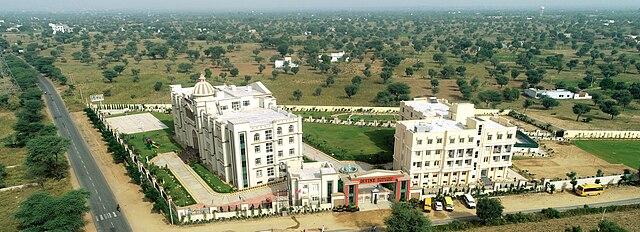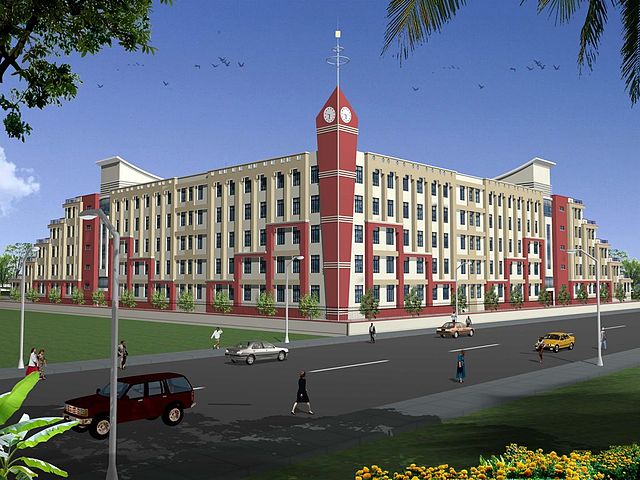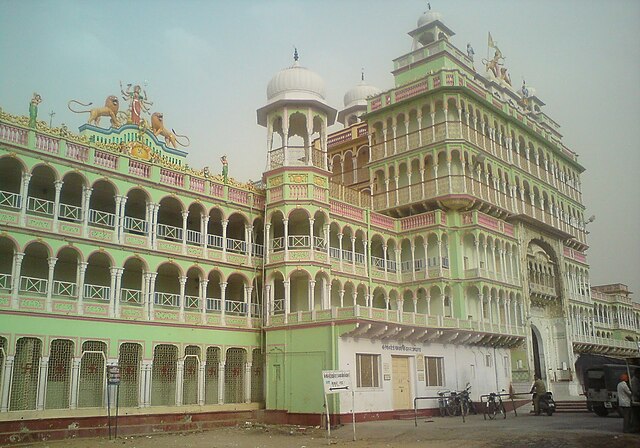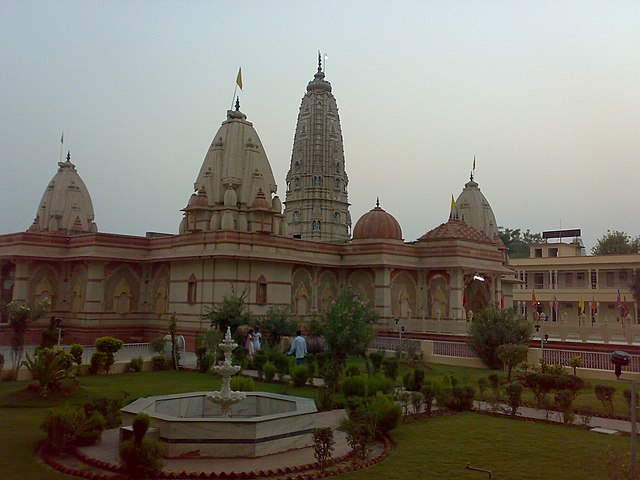Have you ever dreamed of stepping into a place where history whispers through ancient walls and vibrant culture dances in the streets? Welcome to Jhunjhunu, a lesser-known treasure tucked away in the heart of Rajasthan, India. This city, steeped in tales of valor, artistry, and tradition, offers a unique blend of old-world charm and modern vibrancy. Whether you’re a history buff, an architecture enthusiast, or simply a curious traveler, Jhunjhunu has something special for you. Let’s embark on a journey to uncover the magic of this Rajasthani gem, exploring its storied past, stunning landmarks, and the heartbeat of its people.
Why Jhunjhunu Should Be on Your Travel Radar
Picture this: a city where every corner tells a story, where intricately painted havelis stand as testaments to a bygone era, and where the warmth of the locals makes you feel right at home. Jhunjhunu isn’t just another dot on the map; it’s a destination that offers an authentic slice of Rajasthan without the overwhelming tourist crowds of Jaipur or Udaipur. From its historical significance to its vibrant festivals, Jhunjhunu is a place where you can immerse yourself in the soul of India. So, why should you visit? Because it’s a chance to experience Rajasthan’s raw, unfiltered beauty, wrapped in a tapestry of culture and heritage.
A Brief History of Jhunjhunu
Jhunjhunu’s history is like a page ripped from an epic novel. Founded by the Jat chieftain Jujhar Singh Nehra in the 17th century, the city earned its name from this brave warrior, often called “Jhunjha Jat.” His legacy is etched into the city’s very foundation, with landmarks like Nehra Hill standing as a reminder of his valor. Over the centuries, Jhunjhunu became a stronghold of the Shekhawati region, ruled by the Shekhawat Rajputs, who left behind a legacy of art, architecture, and philanthropy. The city’s havelis, built by wealthy merchants, are a testament to its prosperous past, making it a living museum of Rajasthani heritage.
The Shekhawati Connection
Jhunjhunu is the crown jewel of the Shekhawati region, often dubbed the “open-air art gallery” of Rajasthan. Why? Because this region is home to thousands of havelis adorned with breathtaking frescoes, depicting everything from mythological tales to scenes of daily life. These grand mansions, built by Marwari traders who amassed fortunes in the 18th and 19th centuries, showcase the region’s artistic prowess. Jhunjhunu’s role as a cultural and economic hub in Shekhawati makes it a must-visit for anyone eager to explore Rajasthan’s artistic heritage.
Top Attractions in Jhunjhunu You Can’t Miss

Ready to explore the sights that make Jhunjhunu unforgettable? From majestic forts to ornate havelis, the city is packed with attractions that will leave you awestruck. Each landmark tells a story, weaving together the threads of history, art, and culture. Let’s dive into the must-see spots that define Jhunjhunu’s charm.
Rani Sati Temple: A Spiritual Haven
One of Jhunjhunu’s most famous landmarks is the Rani Sati Temple, a place of immense spiritual significance. Dedicated to Narayani Devi, believed to be an incarnation of Goddess Durga, this temple attracts devotees from across India. Its stunning architecture, with intricate marble work and vibrant murals, is a feast for the eyes. But it’s not just about aesthetics—this temple is a place where faith and devotion come alive, especially during the annual Rani Sati Mela. Visiting here feels like stepping into a sacred space where history and spirituality intertwine.
Modi Haveli: A Masterpiece of Art
Imagine walking through a mansion where every wall is a canvas, painted with stories from centuries past. That’s the Modi Haveli for you. This architectural gem, built by the wealthy Modi family, is a showcase of Shekhawati’s signature frescoes. From depictions of gods and goddesses to scenes of British colonial life, the artwork here is a window into the past. As you wander through its courtyards, you’ll feel like you’re strolling through a living history book, each painting whispering tales of a bygone era.
Khetri Mahal: The Palace of Winds
Not to be confused with Jaipur’s Hawa Mahal, Jhunjhunu’s Khetri Mahal is a hidden gem often called the “Palace of Winds” for its airy, open design. Built in the 18th century, this palace is a marvel of Rajput architecture, with delicate arches and jali work that let breezes flow through its halls. Though it’s now in ruins, its skeletal beauty still captivates visitors. Exploring Khetri Mahal is like stepping into a forgotten kingdom, where the echoes of royalty linger in the air.
Birla Museum and Temple: A Blend of Faith and Knowledge
For those who love a mix of culture and education, the Birla Museum and Temple complex is a must-visit. The temple, dedicated to Lord Vishnu and Lakshmi, is a serene spot for reflection, while the museum offers a deep dive into Jhunjhunu’s history and the Shekhawati region’s art. From ancient artifacts to intricate paintings, the museum is a treasure trove of knowledge. It’s the perfect place to soak in the city’s heritage while enjoying a moment of tranquility.
The Haveli Culture: Jhunjhunu’s Architectural Soul
If Jhunjhunu had a heartbeat, it would be its havelis. These grand mansions, built by wealthy merchants, are more than just buildings—they’re a testament to the city’s prosperity and artistic legacy. Wandering through Jhunjhunu’s streets feels like walking through an open-air gallery, with each haveli showcasing unique frescoes and architectural details. Let’s explore why these havelis are the soul of Jhunjhunu.
Frescoes That Tell a Story
What makes Jhunjhunu’s havelis so special? It’s the frescoes. These vibrant wall paintings depict everything from Hindu mythology to scenes of British colonial life, trains, and even early bicycles. The artists of Shekhawati were masters of their craft, blending local traditions with influences from afar. Visiting havelis like the Kanodia or Seth Arjun Das Goenka Haveli feels like flipping through a colorful history book, where every painting has a tale to tell.
Preserving the Past
Sadly, many of Jhunjhunu’s havelis are in a state of disrepair, their frescoes fading under the weight of time. But there’s hope! Local organizations and heritage enthusiasts are working to restore these architectural gems, ensuring their stories live on. As a visitor, you can support these efforts by choosing guided tours that contribute to preservation projects. It’s a small way to help keep Jhunjhunu’s heritage alive for future generations.
Jhunjhunu’s Festivals: A Burst of Color and Culture

Ever been to a festival where the entire city comes alive with music, dance, and joy? Jhunjhunu’s festivals are just that—a vibrant celebration of its culture and traditions. From religious fairs to local festivities, there’s always something happening in this lively city. Let’s take a look at the events that make Jhunjhunu’s calendar so exciting.
Rani Sati Mela: A Spiritual Extravaganza
Held annually at the Rani Sati Temple, the Rani Sati Mela is one of Jhunjhunu’s biggest events. Thousands of devotees flock to the temple to pay their respects, while the surrounding area transforms into a bustling fairground. Think colorful stalls, traditional music, and the aroma of street food wafting through the air. It’s a sensory overload in the best way possible, offering a glimpse into the deep-rooted faith and community spirit of Jhunjhunu.
Gangaur Festival: Celebrating Love and Devotion
Gangaur, a festival dedicated to Goddess Parvati, is celebrated with great fervor in Jhunjhunu. Women dress in their finest traditional attire, carrying beautifully decorated idols of the goddess in processions through the streets. The air is filled with folk songs and the rhythm of dhol drums, creating an atmosphere of pure joy. If you’re lucky enough to visit during Gangaur, you’ll witness the city at its most vibrant, with love and devotion at the heart of the celebration.
Local Cuisine: A Taste of Jhunjhunu
Let’s talk food—because what’s a trip to Rajasthan without indulging in its mouthwatering cuisine? Jhunjhunu’s food scene is a delicious reflection of Rajasthani flavors, with hearty dishes that warm the soul. From spicy curries to sweet treats, here’s what you need to try when you’re in town.
Dal Baati Churma: The Rajasthani Classic
If there’s one dish that screams Rajasthan, it’s Dal Baati Churma. This iconic meal features lentil curry (dal), baked wheat balls (baati), and a sweet crumbled dessert (churma). In Jhunjhunu, you’ll find this dish served with a generous dollop of ghee, making every bite a burst of flavor. Whether you’re dining at a local eatery or a roadside dhaba, this is a must-try that’ll leave you hungry for more.
Kachori and Samosa: Street Food Delights
Craving a quick snack? Jhunjhunu’s street food scene has you covered. Kachoris, crispy pastries filled with spiced lentils or peas, and samosas, stuffed with spicy potatoes or meat, are local favorites. Pair them with tangy tamarind chutney, and you’ve got a snack that’s as addictive as it is delicious. Wander through the bustling markets, and let the aroma of freshly fried kachoris guide you to foodie heaven.
Sweet Treats: Ghewar and More
No meal in Jhunjhunu is complete without something sweet. Ghewar, a disc-shaped dessert made from flour, ghee, and sugar syrup, is a local specialty, especially during festivals like Teej. Its crispy texture and syrupy sweetness make it a crowd-pleaser. You’ll also find shops selling laddoos and jalebis, perfect for satisfying your sweet tooth. Trust me, one bite of ghewar, and you’ll be hooked!
Exploring Jhunjhunu’s Markets

Ready to shop till you drop? Jhunjhunu’s markets are a treasure trove of handicrafts, textiles, and local goodies. Whether you’re hunting for souvenirs or just soaking in the vibrant atmosphere, the city’s bazaars are a delight for the senses.
Nehru Market: The Heart of Shopping
Nehru Market is Jhunjhunu’s go-to spot for everything from traditional Rajasthani jewelry to colorful fabrics. The narrow lanes are lined with shops selling bandhani sarees, lac bangles, and handcrafted pottery. Bargaining is part of the fun here, so don’t be shy to haggle for a good deal. The market’s lively vibe, with vendors calling out and the scent of spices in the air, makes it a must-visit for any shopper.
Local Handicrafts: Bringing Jhunjhunu Home
Want to take a piece of Jhunjhunu with you? Look for Shekhawati-style paintings or miniature artworks inspired by the region’s frescoes. You’ll also find intricately embroidered bags and traditional mojari shoes, perfect for adding a touch of Rajasthan to your wardrobe. Shopping in Jhunjhunu isn’t just about buying—it’s about connecting with the city’s artistic soul.
Travel Tips for Visiting Jhunjhunu
Planning a trip to Jhunjhunu? Here are some insider tips to make your visit smooth and unforgettable. From getting around to staying safe, I’ve got you covered.
Best Time to Visit
Jhunjhunu’s desert climate means hot summers and pleasant winters. The best time to visit is between October and March, when the weather is cool and perfect for sightseeing. Winter also coincides with festivals like Rani Sati Mela and Gangaur, adding an extra layer of excitement to your trip. Pack light cotton clothes for the day and a jacket for chilly evenings.
Getting to Jhunjhunu
Jhunjhunu is well-connected by road and rail. The nearest airport is in Jaipur, about 190 kilometers away, from where you can take a taxi or bus. Regular trains and buses also connect Jhunjhunu to Delhi, Jaipur, and other major cities. Once you’re in the city, auto-rickshaws and cycle rickshaws are the easiest way to get around, offering a fun and affordable way to explore.
Where to Stay
From budget guesthouses to heritage hotels, Jhunjhunu has options for every traveler. For a truly immersive experience, consider staying in a restored haveli-turned-hotel, where you can sleep surrounded by history. Hotels like Jamuna Resort and Hotel Haveli offer comfortable stays with a touch of Rajasthani charm. Book in advance during peak season to snag the best deals.
Why Jhunjhunu Stands Out
In a state filled with iconic destinations, what makes Jhunjhunu special? It’s the city’s ability to balance tradition with modernity, offering a glimpse into Rajasthan’s soul without the touristy gloss. Whether it’s the intricate frescoes of its havelis, the spiritual energy of its temples, or the warmth of its people, Jhunjhunu feels like a hidden secret waiting to be discovered. It’s a place where you can lose yourself in history, indulge in delicious food, and create memories that last a lifetime.
Conclusion
Jhunjhunu is more than just a destination—it’s an experience that captures the essence of Rajasthan’s rich heritage and vibrant culture. From its awe-inspiring havelis to its lively festivals and mouthwatering cuisine, this city offers a journey through time and tradition. Whether you’re marveling at the frescoes of Modi Haveli, seeking blessings at Rani Sati Temple, or savoring a plate of dal baati churma, Jhunjhunu will leave you enchanted. So, pack your bags, grab your camera, and get ready to uncover the magic of this Rajasthani gem. Where will your Jhunjhunu adventure take you?
FAQs
1. What is the best time to visit Jhunjhunu?
The best time to visit Jhunjhunu is from October to March, when the weather is cool and ideal for exploring. This period also coincides with major festivals, adding to the city’s charm.
2. How can I reach Jhunjhunu from Delhi?
Jhunjhunu is about 250 kilometers from Delhi and can be reached by train, bus, or car. Regular trains and buses run from Delhi to Jhunjhunu, or you can drive via NH48 for a scenic road trip.
3. Are there any heritage hotels in Jhunjhunu?
Yes, Jhunjhunu offers several heritage hotels, including converted havelis like Hotel Haveli and Jamuna Resort, which provide an authentic Rajasthani experience.
4. What are the must-try dishes in Jhunjhunu?
Don’t miss dal baati churma, kachori, samosas, and ghewar. These dishes capture the essence of Rajasthani cuisine and are widely available in local eateries.
5. Is Jhunjhunu safe for solo travelers?
Yes, Jhunjhunu is generally safe for solo travelers. Stick to well-populated areas, avoid isolated spots at night, and follow standard travel precautions for a worry-free trip.

